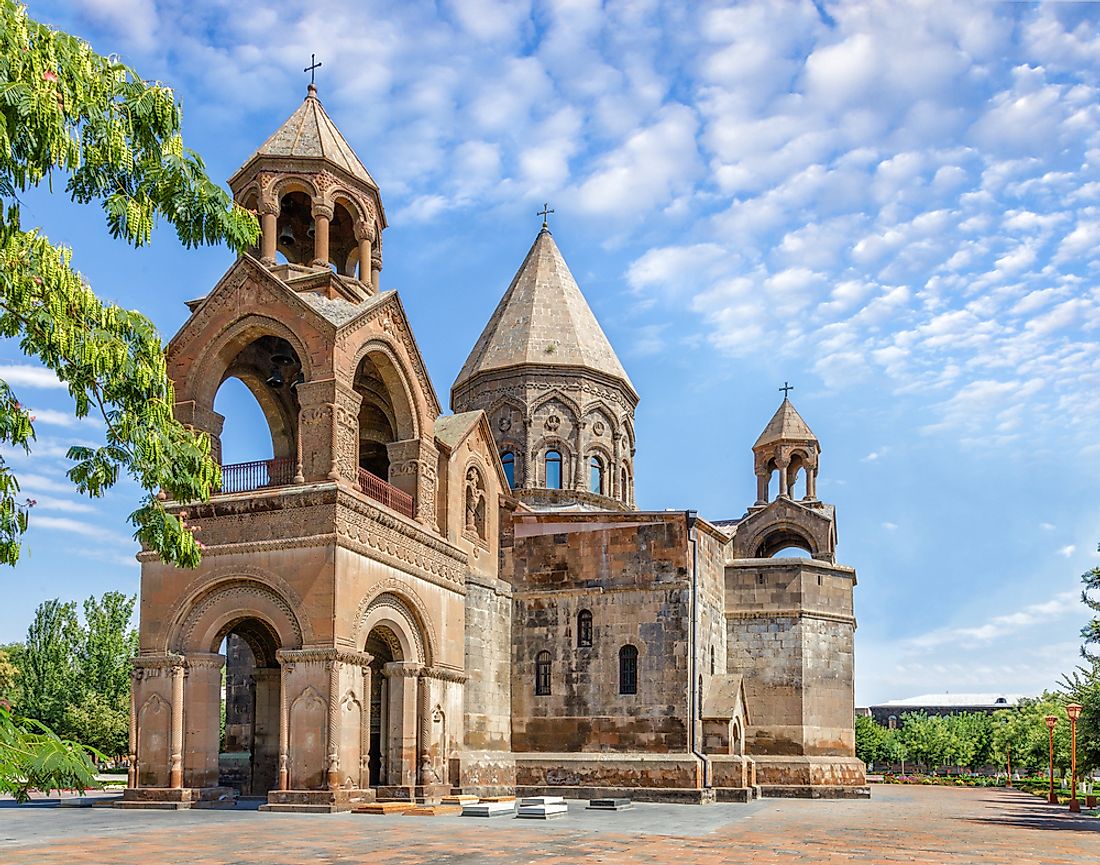Religion In Armenia

The Constitution of Armenia separates church and state, while simultaneously establishing the Armenian Apostolic Church (AAC) as the national church. This means the AAC is afforded many privileges not given to other churches. Freedom of religion is a guaranteed right under the Constitution, which also allows for conscientious objection to military service. Although the government promises the right to freedom of religion, several denominations have filed reports of religious persecution. These reports range from difficulty obtaining construction permits to physical and verbal harassment.
Religious Demography of Armenia
Of the 3.1 million people living in Armenia, approximately 98% are of ethnic Armenian descent. The majority of these individuals identify as members of the Armenian Apostolic Church, around 92.5%. This is not, however, the only religious identity within the country. Other minority religions, and their respective numbers of followers, include Evangelicals, which total 29,280 adherents among Armenia's population, followed by Catholics (13,996), Jehovah’s Witnesses (8,695), Eastern Orthodox Christians (8,587), Molokan (2,974), Assyrian Church of the East (1,733), Islam (812), Protestant (733), and Mormon (241). Other religions include Judaism, Yazidism, and Paganism.
Religions in Armenia with the Largest Numbers of Followers
As previously mentioned, the Armenian Apostolic Church is the national religion, and has the largest percentage of followers among the Armenian populace. This church can be traced back to the 1st Century AD when its ideology was introduced by Bartholomew and Thaddeus, both Christian apostles. Armenia went on to become the first nation in the world to declare Christianity as its national religion in the 4th Century. Practitioners of this faith celebrate Christmas on January 6, combining the birth of Jesus with the Feast of the Epiphany. In 2015, the church canonized all of the victims of the 1915 Armenian Genocide. This canonization event is one of the largest in history and the first performed by the church in 400 years. In 2009, the Constitution was amended to make proselytizing to Armenian Apostolic members a crime.
Minor Religions in Armenia
The largest non-Christian sect in Armenia are the Yazidis, who also represent the largest ethnic minority. Yazidi is has a combination of beliefs from several religions, including Christianity, Islam, Zoroastrianism, and Judaism. Typically, marriage only occurs between two Yazidis. These individuals came to present-day Armenia in an attempt to escape religious persecution by Ottoman Turks and Sunni Kurds in the late 19th and early 20th Centuries. Today, this group is building the largest Yazidi temple in the world in a small town in Armenia. The majority of these individuals live around Mount Aragats.
The largest minority religion in Armenia is Evangelical Christianity, with approximately 29,280 followers. The Armenian Evangelical Church was established in 1846. The church has its roots in the Pietistical Union, a Bible study group from that era. During these meetings, the members began to disagree with the practices of the Armenian Apostolic Church. These reformists were excommunicated and organized an independent religious community, the Evangelical Church. Today, this religion is practiced in several countries.
Growing Religions and Faith Groups in the Country
The Armenian Catholic Church, in full communion with the Roman Catholic Church, seems to be the fastest growing in the country. Although centered in Armenia, its practitioners are located in several other countries, particularly in Poland, Lebanon, and Syria. Between 2010 and 2015, worldwide followers of the Armenian Catholic Church grew from 593,459 to 736,956.
Religion In Armenia
| Rank | Faith | % Of Population Affiliated To The Faith |
|---|---|---|
| 1 | Armenian Apostolic Church | 92.5% |
| 2 | Other Christianity | 2.3% |
| 3 | Yazidism | 0.8% |
| 4 | Other Religions | 0.4% |
| 5 | Not religious | 4.0% |







